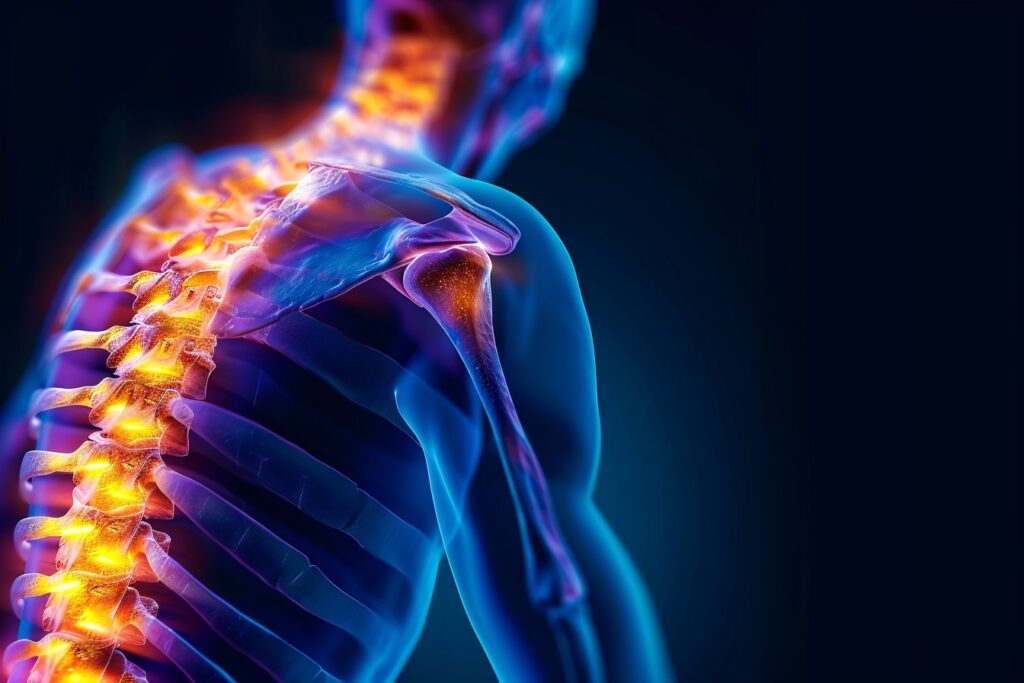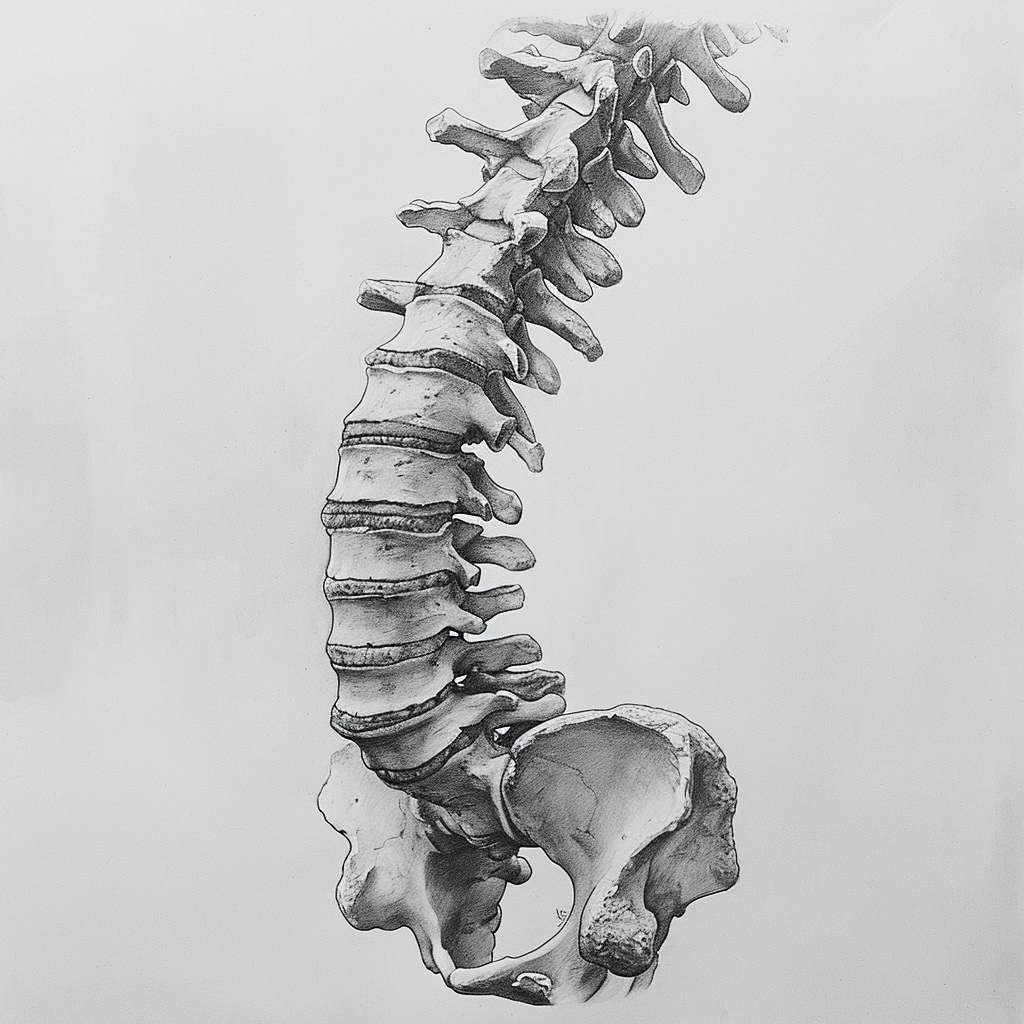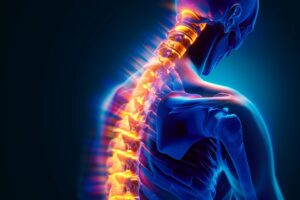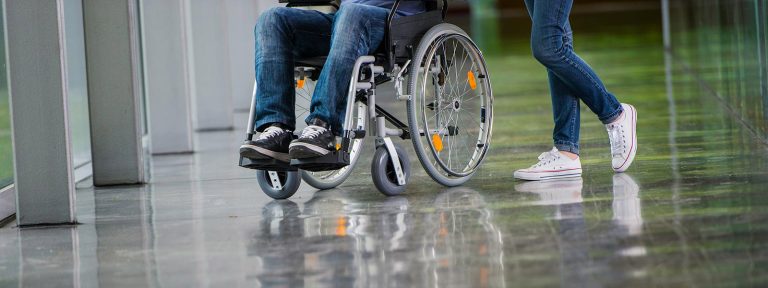Exploring the Long-term Impact of Spinal Cord Injuries

Spinal cord injuries are life-altering events that can have a profound impact on an individual’s physical, emotional, and psychological well-being. The spinal cord, a bundle of nerves, plays a critical role in transmitting messages between the brain and the rest of the body. Controlling essential functions such as muscle movement, blood pressure, and bladder control, the spinal cord is key to a healthy full functioning individual. When the spinal cord is damaged due to accidents, medical conditions, or sports injuries, the consequences can be devastating. We will explore the long-term impact of spinal cord injuries, including the anatomy of the spinal cord, common types of injuries, causes, recognizing symptoms, diagnosis and treatment, rehabilitation, living with a spinal cord injury, prevention, legal assistance, and the importance of staying informed. By understanding the complexities of spinal cord injuries, we can work towards creating a more inclusive society and providing support to those affected by these life-changing injuries.
Understanding Spinal Cord Injuries
A spinal cord injury occurs when there is damage to the spinal cord, resulting in a loss of function below the level of the injury. The severity and location of the injury determine the extent of the loss of function. The spinal cord, consisting of nerve fibers, nerves cells, and a bundle of nerves, is protected by the spinal column. When the spinal cord is injured, the nerve fibers within the spinal cord are affected, leading to disruptions in the transmission of messages between the brain and the rest of the body. This can result in the loss of muscle movement, muscle tone, blood pressure control, sexual function, bladder control, bowel control, and other autonomic functions. Understanding the anatomy of the spinal cord is essential for diagnosing and treating injuries effectively, as the level and type of injury determine the areas of the body affected. Whether it is a complete injury, resulting in the loss of all motor and sensory function, or an incomplete injury, allowing some function below the injury level, spinal cord injuries have long-term consequences that significantly impact the quality of life of the injured person.
The Anatomy of the Spinal Cord
The spinal cord, part of the nervous system, is a vital component of the human body. It extends from the base of the brain to the lower back, protected by the spinal column made up of individual vertebrae. Nerve fibers within the spinal cord act as conduits, carrying electrical signals or messages between the brain and various parts of the body. These nerve fibers control muscle movement, blood pressure, bladder function, bowel control, and other autonomic functions.
In the event of a spinal cord injury, the nerve fibers are damaged, leading to disruptions in the transmission of messages. This, in turn, can result in the loss of muscle movement, muscle tone, blood pressure control, sexual function, bladder control, bowel control, and other autonomic functions. The severity of the effects largely depends on the level of the injury, with higher levels potentially affecting a more significant portion of the body.
The spinal cord is a critical component of the nervous system, and damage to this delicate structure can have far-reaching consequences. Understanding the intricate anatomy of the spinal cord allows healthcare professionals to diagnose and treat spinal cord injuries more effectively, optimizing the chances of rehabilitation and improving the quality of life for those affected.
What are Some Common Types of Spinal Cord Injuries?
Spinal cord injuries can be broadly categorized into two types: complete injuries and incomplete injuries. In a complete injury, there is a total loss of motor and sensory function below the level of the injury. This means that the injured person has no movement or feeling in the body parts affected by the injury. In contrast, an incomplete injury allows for some remaining function below the injury level, with varying degrees of motor and sensory function preserved.
The level of the injury refers to the location of the damage along the spinal cord. The spinal cord is divided into four regions: the cervical, thoracic, lumbar, and sacral spine. The level of the injury determines which parts of the body are affected. For example, a cervical spine injury may result in the loss of function in the arms, hands, and possibly the legs, while a thoracic spine injury may affect the chest and lower body.
The type and severity of the injury play a significant role in the long-term effects of a spinal cord injury. Rehabilitation, therapy, and medical interventions are tailored to the specific type of injury and the individual’s unique needs, aiming to maximize function, enhance quality of life, and promote independence.
Causes of Spinal Cord Injuries

Spinal cord injuries can occur due to various causes, ranging from accidents to medical conditions. Understanding the different causes of spinal cord injuries is crucial for adopting preventive measures and promoting safety.
How Do Accidents Lead to Spinal Injuries?
Motor vehicle accidents, such as car and motorcycle crashes, are responsible for a significant number of spinal cord injuries. The sheer force of impact during these accidents can cause severe damage to the spinal cord, leading to life-altering consequences for the injured person. Furthermore, sports injuries, particularly those involving high-impact or contact sports, can result in spinal trauma. Falls, especially from heights, are another common cause of spinal cord injuries, especially among older adults who may be more prone to fractures and other injuries due to age-related changes in bone density. Additionally, gunshot wounds can cause severe damage to the spinal cord, with potentially catastrophic effects for the injured person.
Awareness of the potential for spinal injuries in accidents is crucial for prompt medical attention, which can make a significant difference in the outcome for the injured person. Using protective gear, such as seat belts, helmets, and sports safety equipment, can help reduce the risk of spinal cord damage in accidents and sports-related incidents. It is vital to prioritize safety and take necessary precautions to minimize the risk of spinal injuries.
Medical Conditions Resulting in Spinal Injuries
Spinal cord injuries can also be caused by medical conditions that directly or indirectly affect the spinal cord. Conditions such as spinal stenosis, where the spinal column narrows, or disc degeneration, where the intervertebral discs deteriorate, can lead to spinal cord compression and damage. Infections, tumors, and inflammatory diseases, such as multiple sclerosis, can also cause spinal cord injuries by disrupting the normal function of the spinal cord and its nerve fibers.
Recognizing the association between medical conditions and spinal injuries is essential for early intervention and prevention of further damage. Prompt diagnosis and management of underlying medical conditions, such as infections, tumors, or inflammatory diseases, can help reduce the risk of spinal cord injuries. Timely medical attention, coupled with appropriate treatment, may prevent complications and minimize the long-term impact of spinal cord injuries caused by medical conditions.
Recognizing Symptoms of Spinal Cord Injuries
Signs of a Spinal Cord Injury:
- Changes in sensation, such as numbness or tingling
- Loss of movement or paralysis
- Difficulty walking or maintaining balance
- Impaired breathing or coughing
- Exaggerated reflex activities or spasms
- Pain or stinging sensations
Physical Symptoms of Spinal Cord Injuries
Physical effects of spinal cord injuries encompass a wide range of challenges. Loss of bladder and sexual function, as well as muscle movement, are common manifestations of spinal trauma. Complications may include pressure ulcers, urinary tract infections, and blood clots. The specific level of injury determines the extent of function loss in affected body parts, particularly the lower back and lower body. Moreover, spinal cord injuries can lead to issues with muscle control, bowel control, and bladder control. Nerve cells in the affected part of the spinal cord play a significant role in these manifestations.
Emotional and Psychological Symptoms
Individuals who have sustained spinal cord injuries often experience emotional distress, mood changes, and adjustment difficulties. Coping with the effects of such trauma may involve anxiety, grief, and changes in relationships. It is crucial to understand the emotional and psychological impact of spinal injuries as part of comprehensive care. Providing emotional support and access to mental health resources is essential for those affected by spinal cord damage. Addressing emotional and psychological symptoms forms an integral part of the rehabilitation process. This comprehensive approach considers both the physical and emotional aspects of recovery.
Diagnosis and Treatment of Spinal Cord Injuries
Diagnosis of spinal cord injuries involves assessing the level of injury and its effects on the nervous system. Treatment options vary depending on the part of the spinal cord affected, such as the cervical spine or thoracic spine. In the United States, the average age at injury is 42 years, and it’s essential to consider the long-term impacts on nerve cells.
Diagnostic Procedures for Spinal Cord Injuries
Diagnostic procedures for spinal cord injuries involve a series of tests that help determine the location and severity of the injury. Magnetic resonance imaging (MRI) provides detailed images of the damage to the spinal cord, while neurological exams assess the effects of the injury on body functions. X-rays play a crucial role in identifying bone fragments or spinal trauma, enabling healthcare providers to understand the type and level of injury. These procedures are essential in creating an effective rehabilitation plan to address the effects of the injury.
Treatment Options for Spinal Cord Injuries
Seeking medical attention immediately after a spinal cord injury is crucial to minimize the risk of additional complications. Healthcare teams play a vital role in managing potential issues like blood clots and pressure ulcers. Intensive care units closely monitor bodily functions and offer essential support tailored to the individual’s needs. The treatment approach varies depending on the severity and location of the injury, often involving surgical intervention to stabilize the spine. These measures are essential for optimizing recovery and minimizing the long-term effects of such injuries.
Rehabilitation and Recovery from Spinal Cord Injuries
Rehabilitation and recovery from spinal cord injuries are critical for patients to regain function and independence. Nervous system function is affected depending on the level of injury and the part of the spinal cord that is damaged. In the United States, the average age of individuals with spinal cord injuries is increasing. Rehabilitation focuses on retraining the body and mind to overcome the effects of the injury, encouraging the regeneration of nerve cells and optimizing function. Different techniques are used based on the location of the injury, such as cervical spine or thoracic spine.
Physiotherapy and Occupational Therapy
Enhancing muscle movement and lower body functions is the focus of physical therapy. Occupational therapy targets the restoration of bladder and bowel control. Therapy sessions are tailored to enhance the affected body parts and improve muscle tone, as well as spinal cord function. Rehabilitation specialists customize therapy plans to meet the specific needs of the injured individual. This personalized approach considers the level of injury, effects of the injury, and part of the spinal cord affected. Nerve cells, nervous system, average age, and the location of the injury within the spinal cord all play crucial roles in the rehabilitation process.
Psychological Support and Counselling
Emotional and mental health support are essential components of holistic recovery for individuals with spinal cord injuries. Counseling aids in adapting to the long-term effects of the injury, offering vital assistance in navigating the emotional impact. It plays a crucial role in the rehabilitation process, improving the overall quality of life. Patients and their families receive guidance to address the mental health effects of spinal trauma, ensuring they can cope effectively. This support is provided by healthcare providers, recognizing the significance of addressing the emotional challenges alongside the physical aspects of the injury.
Living with a Spinal Cord Injury
Adjusting to life after a spinal cord injury can be challenging, impacting the nervous system and daily activities. The level of injury, whether it’s in the cervical, thoracic, or lumbar spine, determines the effects and prognosis. In the United States, the average age at the time of injury is increasing, influencing rehabilitation options and care needs. Understanding the part of the spinal cord affected and the potential for nerve cell regeneration is crucial in adapting to the new normal.
Day-to-day Challenges
Living with spinal cord injuries poses various day-to-day challenges. Pressure sores and urinary tract infections are frequently encountered, requiring constant management. Additionally, individuals must adapt to managing body temperature, blood pressure, and autonomic dysreflexia as part of their daily routine. Coping with the continuous loss of function and bodily processes also becomes a significant aspect of daily living. Adapting to new physical limitations and potential complications requires ongoing adjustment and perseverance.
Coping Mechanisms and Support Systems
Coping mechanisms and support systems are vital for the overall well-being of individuals with spinal cord injuries. They help in addressing the mental health effects of the injury and provide both emotional and physical support. Family support, social networks, and community-based advocacy groups all contribute to the recovery process and improve the quality of life. These systems play a crucial role in ensuring the individual’s well-being and providing resources and guidance to cope with the effects of the injury.
Prevention of Spinal Cord Injuries
The prevention of spinal cord injuries is crucial in reducing their long-term impact. Understanding the importance of safety measures and injury prevention can significantly decrease the number of such injuries. It’s essential to raise awareness about the various ways to prevent spinal cord injuries, especially considering the life-altering effects of these injuries on the nervous system and nerve cells. The average age and part of the spinal cord affected can also influence the level of injury, making prevention strategies crucial for individuals of all ages.
Safety Measures in Daily Activities
Reducing the risk of spinal cord injuries involves being mindful of safety during sports activities. Adherence to seat belt regulations while driving is crucial in preventing spinal trauma. Educating individuals about the effects of such injuries promotes safety, contributing to injury prevention. Implementing safety measures in daily routines plays a critical role in lowering the risk of spinal cord injuries. It’s essential to raise awareness about safety precautions to ensure the well-being of individuals and reduce the incidence of spinal cord injuries.
Legal Assistance for Spinal Cord Injuries

The legal implications of spinal cord injuries can be overwhelming. Seeking legal assistance can help navigate the complexities of compensation, insurance claims, and disability rights. Understanding the effects of your injury on the nervous system and the level of injury is crucial in building a strong legal case. In the United States, legal professionals specializing in spinal cord injury cases can provide valuable support in addressing the long-term impact. From the cervical spine to the thoracic spine, legal assistance ensures that all aspects of the injury are considered for fair compensation and rehabilitation options.
Role of Personal Injury Law in Spinal Cord Injuries
The legal system encompasses remedies for spinal cord injuries, providing avenues to seek compensation and support. Legal experts specialize in representing such cases, addressing the impact and assisting in the pursuit of justice and rightful compensation. This legal framework focuses on seeking justice and rightful compensation for the effects of the injury.
How Bergel Magence Can Assist You
If you or a loved one has experienced a spinal cord injury, Bergel Magence can provide specialized legal expertise and comprehensive support. Their personalized representation and advocacy for the rights of injury victims are backed by their expertise in navigating the complexities of spinal cord injury claims. Whether it’s understanding the effects of your injury, determining the level of injury in the nervous system, or addressing legal matters related to the spinal cord, Bergel Magence is dedicated to assisting individuals across the United States.
Understanding the legal options for compensation and support
Securing rightful compensation is crucial for individuals affected by spinal cord injuries. Legal support empowers them to explore financial assistance avenues, guiding them to suitable legal recourse. This knowledge enhances prospects for fair compensation and provides the necessary support. Understanding legal options is essential for navigating the complexities of seeking compensation and support, especially in cases of severe spinal cord injuries. Legal professionals play a vital role in advising on the most effective strategies for addressing the long-term impact of these injuries.
Navigating the complexities of insurance coverage and medical bills
Navigating the intricacies of insurance coverage is crucial for ensuring comprehensive financial support for medical expenses associated with spinal cord injuries. Expert guidance plays a vital role in deciphering the complexities of insurance policies related to such injuries, while legal support is instrumental in addressing the intricate nature of medical billing and insurance claims. By understanding these complexities, individuals can minimize the financial burdens and receive holistic support essential for their rehabilitation and recovery. It’s important to navigate the insurance complexities to effectively manage the long-term impact of spinal cord injuries.
Seeking justice and holding responsible parties accountable
Seeking accountability for the consequences of spinal cord injuries is essential for addressing their impact and promoting awareness about their implications. Holding responsible parties accountable ensures ethical and legal obligations are met and fosters a sense of closure and empowerment for the affected individuals. Legal support enables individuals to seek justice, considering the effects of their injury, the part of the spinal cord affected, and the level of injury. On average, in the United States, spinal cord injuries occur at the age of 43, affecting nerve cells in the cervical spine or thoracic spine, impacting the nervous system significantly.
The role of a spinal cord injury lawyer in securing a better future
Securing long-term care and financial compensation after a spinal cord injury is crucial for the affected individual and their family. A knowledgeable spinal cord injury lawyer can provide invaluable assistance in navigating legal and insurance processes, ensuring that the injured person receives the necessary support. By understanding the complexities of these cases, such lawyers can secure compensation for medical expenses, lost wages, and other damages, ultimately contributing to a better future for those impacted by the injury. It’s imperative to choose a lawyer with experience in handling spinal cord injury cases to optimize the outcome.
Staying Informed About Spinal Cord Injuries
Understanding the impact of spinal cord injuries is aided by staying informed. Proactive measures for prevention are promoted through awareness. Enhanced capacity to provide support to affected individuals is derived from knowledge about spinal cord injuries. Ongoing education fosters empathy and understanding within communities. Staying informed contributes to the promotion of inclusive environments, creating a supportive network for those affected. This knowledge becomes crucial in creating inclusive environments for individuals with spinal cord injuries.
Spinal Cord Injuries Can Be Debilitating
Spinal cord injuries have a profound and long-lasting impact on individuals’ lives. From understanding the anatomy of the spinal cord to recognizing the symptoms and seeking proper diagnosis and treatment, every step is crucial in the journey towards recovery. Rehabilitation, both physical and psychological, plays a vital role in helping individuals regain their independence and improve their quality of life. Coping mechanisms, support systems, and preventive measures are essential in managing day-to-day challenges and preventing future injuries. Additionally, legal assistance from firms like Bergel Magence can provide guidance and support in seeking justice, compensation, and a better future. Staying informed about ongoing research and advancements in spinal cord injury treatment is key to improving outcomes and offering hope for the future.



